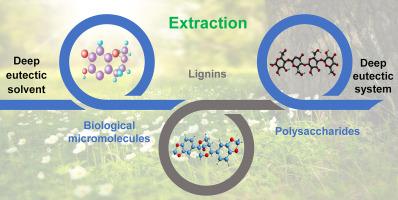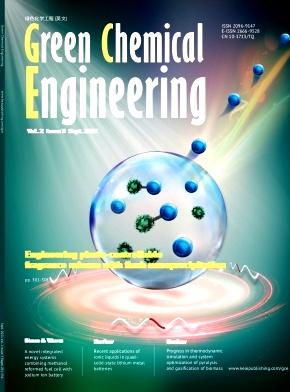天然产品萃取从深共晶溶剂转向深共晶体系
IF 7.6
Q1 ENGINEERING, CHEMICAL
引用次数: 0
摘要
本文全面概述了天然产物萃取领域的最新进展,重点介绍了从深共晶溶剂(DES)到深共晶系统(DESys)萃取的演变过程。DESs 因其环保特性而闻名,已成为从植物中提取各种天然产物(包括微分子、木质素和多糖)的关键。对萃取机理的研究表明,目标化合物通常会与 DES 形成氢键,从而有效地成为溶剂系统的一部分。这种见解促成了 DESys 萃取方法的开发,在这种方法中,氢键受体 (HBA) 和氢键供体 (HBD) 直接与样品混合,形成含有目标化合物的 DESys。从基于 DES 的萃取到基于 DESys 的萃取,引入了创新方法,目标化合物与溶剂系统融为一体,可实现一步溶解和萃取。这种方法无需预先制备 DES,从而简化了流程,提高了萃取效率。此外,DESs 回收和再利用战略有助于可持续发展,提供了具有成本效益和环保的萃取解决方案。基于 DES 和 DESys 的天然产品萃取技术在化妆品、食品、工业和环境领域的应用不断扩大,彰显了其巨大的发展潜力。本综述描述了从基于 DES 到基于 DESys 的天然产品萃取的过渡过程,为推动绿色化学工程的实践提供了宝贵的见解。本文章由计算机程序翻译,如有差异,请以英文原文为准。

Switching from deep eutectic solvents to deep eutectic systems for natural product extraction
This article presents a comprehensive overview of recent advancements in natural product extraction, focusing on the evolution from deep eutectic solvents (DESs) to deep eutectic systems (DESys) for extraction. DESs, known for their environmentally friendly properties, have become crucial in extracting various natural products from plants, including micromolecules, lignin, and polysaccharides. Research into the extraction mechanism reveals that target compounds typically form hydrogen bonds with DESs, effectively becoming part of the solvent system. This insight has led to the development of the DESys extraction method, where hydrogen bond acceptors (HBAs) and hydrogen bond donors (HBDs) are directly mixed with the sample to form a DESys containing the target compounds. The shift from DES-based extraction to DESys-based extraction introduces innovative approaches where target compounds are integral to the solvent system, allowing for one-step dissolution and extraction. This methodology eliminates the need for pre-prepared DESs, simplifying processes and enhancing extraction efficiency. Additionally, strategies for DESs recycling and reuse contribute to sustainability efforts, offering cost-effective and environmentally friendly extraction solutions. The expanding applications of DES-based and DESys-based natural product extraction in cosmetics, food, industry, and environmental fields highlight their promising development potential. By delineating the transition from DES-based to DESys-based extraction of natural products, this review offers valuable insights for advancing the practice of green chemical engineering.
求助全文
通过发布文献求助,成功后即可免费获取论文全文。
去求助
来源期刊

Green Chemical Engineering
Process Chemistry and Technology, Catalysis, Filtration and Separation
CiteScore
11.60
自引率
0.00%
发文量
58
审稿时长
51 days
 求助内容:
求助内容: 应助结果提醒方式:
应助结果提醒方式:


